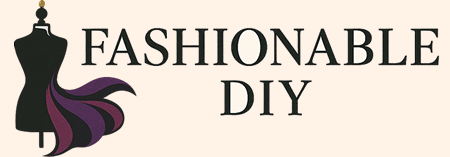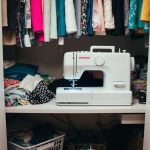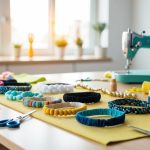The Intersection of DIY Fashion and Tech: Future Trends
Mentorship and the Transfer of Skills
Mentorship remains a cornerstone of the DIY fashion ecosystem, fostering collaboration and skill transfer among enthusiasts. Experienced designers and technologists share their expertise, guiding newcomers through complex projects. This support network is invaluable, offering personalized advice and fostering innovation.
Access to tools and resources is often facilitated through mentorship programs. Mentors might offer access to local makerspaces or digital platforms, broadening learning opportunities. These environments provide creators with the necessary tools and guidance to explore unconventional techniques, bridging the gap between traditional fashion methods and emerging technologies.
Commercialization and Distribution
The rise of DIY fashion powered by technology provides new opportunities in e-commerce and innovative fundraising. Start-ups harness these elements to creatively reach consumers and backers.
E-Commerce and DIY Fashion Start-ups
E-commerce platforms have given DIY fashion start-ups a vital channel to reach global markets. These platforms allow designers to showcase unique creations to a vast audience. The affordability and accessibility of online stores reduce the need for physical retail spaces, allowing smaller brands to compete.
Successful start-ups leverage social media and search engine optimization to capture target audiences tailored to specific fashion interests. They can experiment with fast-changing trends while building direct relationships with customers.
The integration of augmented reality features by some e-commerce sites further enhances the consumer experience by allowing online try-ons. This innovation can drive customer engagement, making online shopping more interactive and tailored.
Crowdfunding Success Stories
Crowdfunding, through platforms like Kickstarter, has proven instrumental for DIY fashion brands, aiding in both financial support and market validation. Creating successful campaigns involves presenting a compelling vision, backed by clear goals and rewards for supporters.
Many fashion innovators have met their intended pledges quickly, gaining early traction without traditional investment. This method opens possibilities for testing unconventional designs or sustainable materials while cultivating a dedicated community of backers.
Direct feedback from backers provides valuable insights into product development and can lead to improved offerings. As more designers seek independent routes to success, crowdfunding remains a pivotal strategy in the commercialization landscape of DIY fashion.
Sustainability in DIY Fashion
In DIY fashion, sustainability emerges as a pivotal aspect for modern creators. Emphasizing ethical manufacturing and sustainable movements encourages environmentally-friendly practices and mindful consumption.
Ethical Manufacturing and Materials
Ethical manufacturing involves using sustainable materials and processes. DIY fashion enthusiasts often repurpose old clothes and materials, reducing the need for new resources. This practice not only minimizes waste but also promotes creativity. They prioritize fabrics with low environmental impact, such as organic cotton or recycled polyester. These materials consume less energy and water compared to conventional fabrics. Community workshops and online forums offer insights on sourcing sustainable materials, helping crafters make informed choices. The commitment to ethical practices ensures that the environmental footprint of DIY projects is kept to a minimum.
Sustainable Fashion Movements
Sustainable fashion movements play a central role in popularizing eco-friendly DIY practices. Initiatives encouraging upcycling and recycling help spread awareness about sustainability issues. Events like clothing swaps and repair workshops foster community engagement and reduce textile waste. Influencers and activists contribute significantly by sharing tips and advocating for conscious consumption. This movement emphasizes the importance of quality over quantity, urging individuals to invest time and effort rather than frequently purchasing new items. Thus, these movements not only promote sustainable practices but also inspire a shift towards a more eco-conscious mindset in the fashion community.



